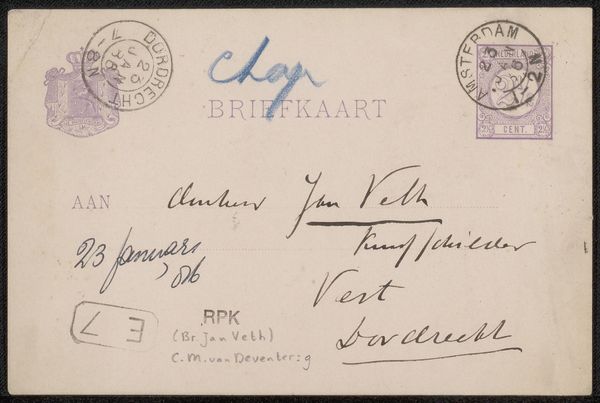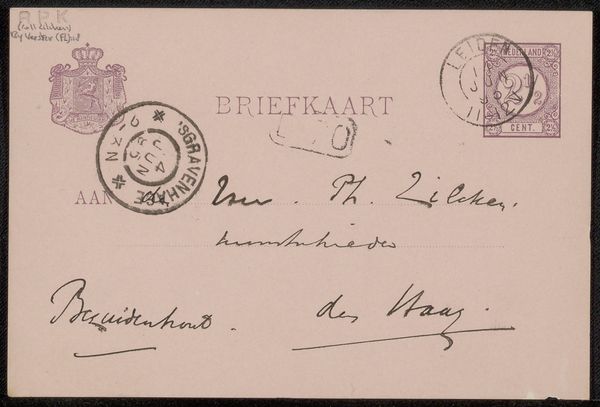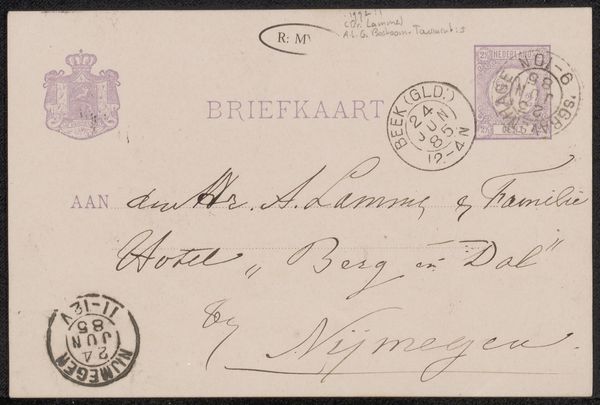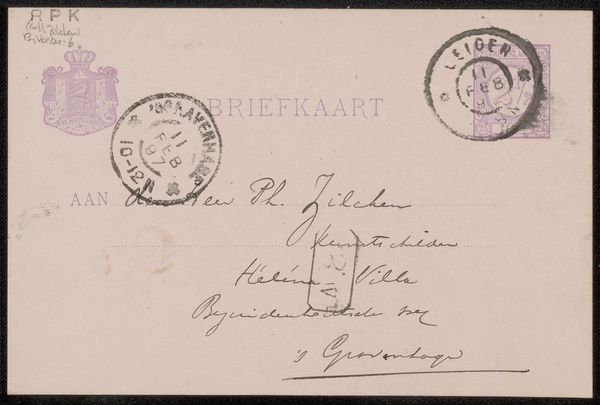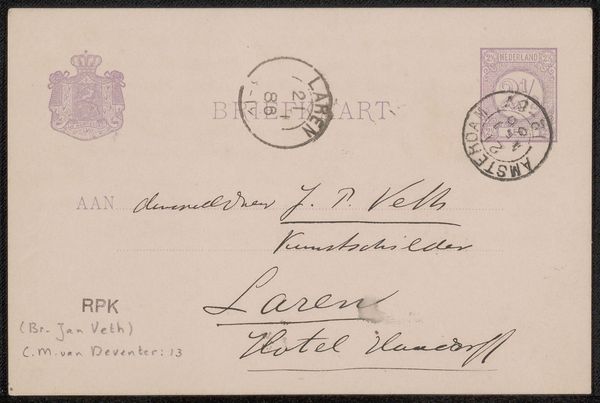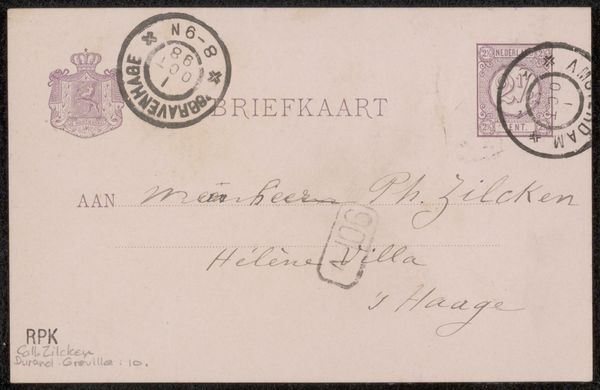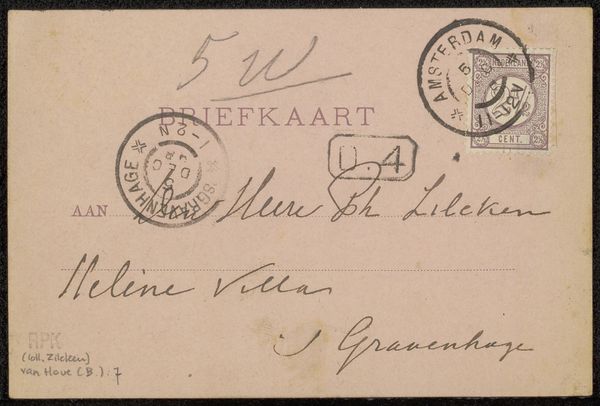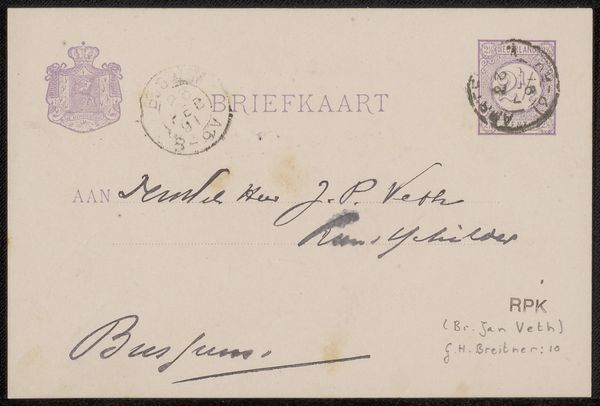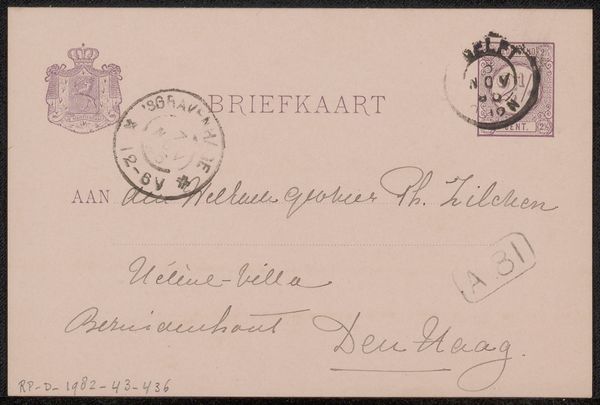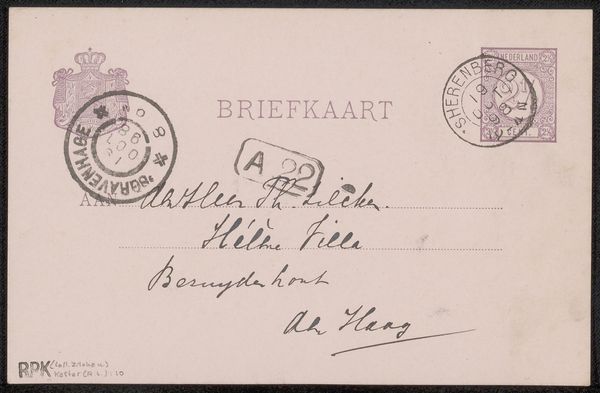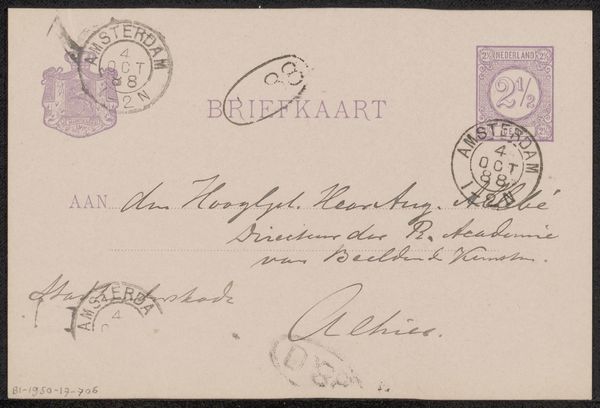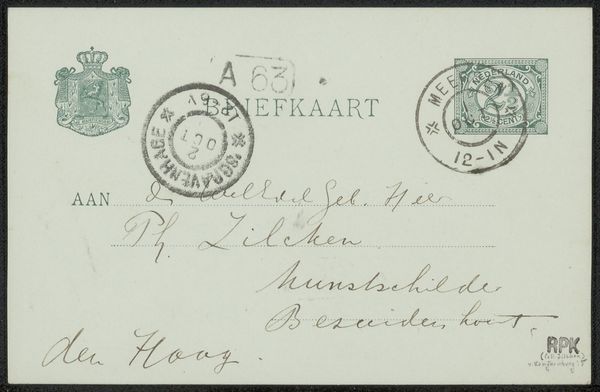
drawing, ink, pen
#
drawing
#
art-nouveau
#
hand-lettering
#
pen sketch
#
hand drawn type
#
hand lettering
#
personal sketchbook
#
ink
#
ink drawing experimentation
#
pen-ink sketch
#
pen work
#
sketchbook drawing
#
pen
#
sketchbook art
#
calligraphy
Copyright: Rijks Museum: Open Domain
Curator: What a captivating glimpse into the past. Here we have "Briefkaart aan Jan Veth," dating back to before 1885, created by Chap van Deventer using pen and ink. It’s essentially a beautifully crafted postcard. Editor: It feels so intimate. Like stumbling upon someone’s private thoughts or a quickly scribbled message. The casual nature makes you wonder about the lives and relationships it briefly illuminates. Curator: Indeed, the fact that it's a handwritten note transforms it into something profoundly personal. As an activist, what resonances do you pick up on from the piece? Editor: Well, looking at the address of the recipient, Mr. John P. Veth—'oil painter' it declares! It raises questions about artistic networks in the Netherlands during that period. How artists supported each other, shared ideas, and negotiated their identities within a rapidly changing social and political landscape. Epistolary exchanges such as these functioned as vital conduits within artistic communities, enabling vital flows of both creative and socio-political discourse. Curator: The flowing lines and elegant script are particularly striking. There is something both utilitarian and graceful. A very human sensibility. Editor: It’s that tension between the practical function of a message—addressing someone at the Hotel Hamdorf—and the deliberate aesthetic choices that gets to me. The almost ornamental quality in some of the lettering suggests an intentional artistic touch that elevates it beyond mere communication. Even now, handwriting is slowly being turned into an act of resistance of a kind. Curator: Absolutely. Perhaps Van Deventer wanted to gift Veth with a miniature work of art in its own right, however modest. The swirls in the name. The flourishes beneath "BRIEFKAART"... they signal thoughtfulness, care and aesthetic intention. It speaks volumes about artistic practices that are interwoven through the everyday acts of correspondence. I find the contrast of the various gothic looking stamps particularly interesting. Editor: Agreed. These stamps act almost like visual punctuation, anchoring the entire composition with traces of the socio-political realities of the period. How notions of identity and belonging may intersect in such intimate forms of exchange is of real interest, both then and now. Curator: Seeing this now makes you pause and consider who created this small piece of history and its intended recipient. A tiny act, frozen in time. Editor: Yes, an everyday artifact that lets us ponder the intimate exchanges shaping art history.
Comments
No comments
Be the first to comment and join the conversation on the ultimate creative platform.
